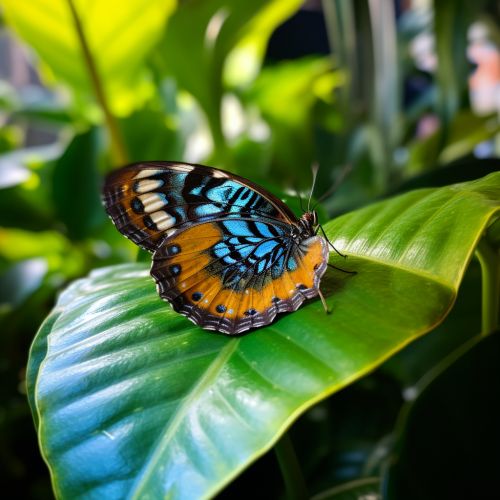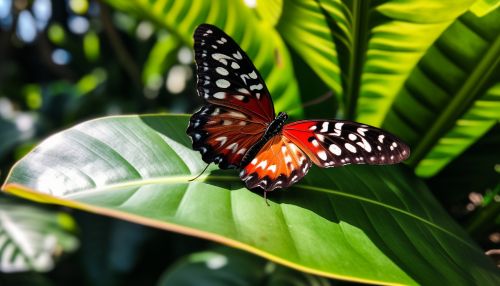The Ecology of Butterfly Host Plant Selection and Speciation
Introduction
The ecology of butterfly host plant selection and speciation is a complex and fascinating field of study within lepidopterology, the study of butterflies and moths. It involves the examination of the intricate relationships between butterflies, their host plants, and the process of speciation, or the formation of new and distinct species in the course of evolution.


Host Plant Selection
Factors Influencing Host Plant Selection
Butterflies exhibit a behavior known as host plant selection, where they choose specific plants on which to lay their eggs. This selection is not random, but is influenced by a variety of factors including plant chemistry, plant structure, and environmental conditions.
Plant chemistry plays a significant role in host plant selection. Butterflies are attracted to plants that produce certain types of secondary metabolites, which are chemicals that are not directly involved in the growth, development, or reproduction of the plant, but are crucial for the survival and development of the butterfly larvae.
Plant structure also influences host plant selection. Butterflies prefer to lay their eggs on plants that provide adequate shelter and food for their larvae. The physical characteristics of the plant, such as leaf shape, size, and texture, can affect the butterfly's choice.
Environmental conditions, such as temperature, humidity, and light intensity, can also influence host plant selection. Butterflies are more likely to lay their eggs on plants that are located in environments that are conducive to the survival and development of their larvae.
Consequences of Host Plant Selection
The host plant selection behavior of butterflies has several important consequences. First, it influences the distribution and abundance of butterfly species. Butterflies are more likely to be found in areas where their preferred host plants are abundant.
Second, host plant selection can affect the survival and reproductive success of butterflies. Butterflies that choose suitable host plants for their larvae are more likely to have higher survival and reproductive rates.
Third, host plant selection can lead to coevolution between butterflies and their host plants. Coevolution is a process in which two or more species influence each other's evolution. In the case of butterflies and their host plants, the butterflies may evolve to become more specialized in using certain plants as hosts, while the plants may evolve defenses against butterfly herbivory.
Speciation
Mechanisms of Speciation
Speciation in butterflies can occur through several mechanisms, including allopatric speciation, sympatric speciation, and parapatric speciation.
Allopatric speciation occurs when a population of butterflies is divided into two or more geographically isolated populations. Over time, these isolated populations may evolve different traits due to differences in environmental conditions, host plant availability, and genetic drift. If these populations become so different that they can no longer interbreed, they are considered separate species.
Sympatric speciation occurs when a new species evolves from a single ancestral species while inhabiting the same geographic region. In butterflies, this can occur through host plant specialization. If a population of butterflies begins to use a new host plant and this host plant use becomes genetically determined, it can lead to reproductive isolation and speciation.
Parapatric speciation is similar to sympatric speciation, but it occurs when populations are partially isolated from each other, not completely. This can happen when there is a gradient in environmental conditions or host plant availability across the range of a butterfly species.
Role of Host Plant Selection in Speciation
Host plant selection can play a crucial role in butterfly speciation. The use of different host plants can lead to reproductive isolation, one of the key factors in speciation. This can occur through several mechanisms.
First, butterflies that use different host plants may have different mating times or locations. For example, butterflies that use host plants that are available earlier in the year may emerge and mate earlier than butterflies that use host plants that are available later.
Second, butterflies that use different host plants may develop different mate preferences. For example, female butterflies may prefer to mate with males that use the same host plant, a behavior known as assortative mating.
Third, the use of different host plants can lead to genetic divergence. If host plant use is genetically determined, butterflies that use different host plants may accumulate genetic differences over time, leading to reproductive isolation and speciation.
Conclusion
The ecology of butterfly host plant selection and speciation is a complex and fascinating field of study. It provides insights into the intricate relationships between butterflies and their host plants, and the processes that drive the formation of new butterfly species. Further research in this area will continue to shed light on the intricate dynamics of butterfly ecology and evolution.
